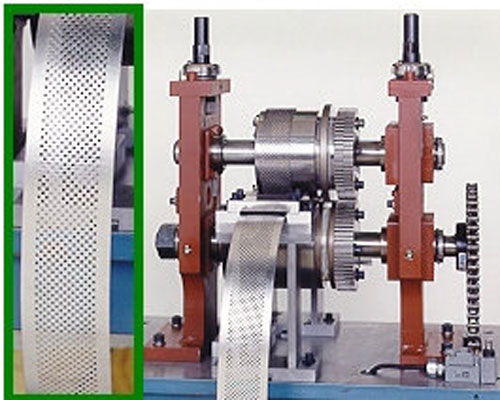Rotary punching is a unique method used to punch holes, shapes, louvers, etc. in ferrous and non-ferrous materials at high speeds.
There are definitely conditions that are ideal for rotary hole punching machines to be used, and there are conditions under which rotary punching machines should not be used. When conditions are ideal, it is hard to beat the cost and efficiency of a rotary punching tool.
You can picture the ideal situation—thin to medium gauge material being punched in a tight repeating pattern in long lengths at high speeds. Many of the products made for the construction industry fit this description. They can be described as commodity products, which require that they be run at high speeds to help keep the costs down.
Yes, stamping systems can be used to punch materials much thicker than rotary punching machines can handle. However, we usually aren’t talking about high speed high production part requirements when thicknesses are greater than .135” and the lengths are longer than 48”. Therefore, we aren’t talking about punching systems that have to run at speeds above 60 feet/min. 60 feet/min and below can be done comfortably using a punch press and servo-feed.
Cost of a punching machine system can swing significantly in favor of one method or the other depending again on the thickness and the speeds required.
Savings in areas we don’t always think about—for instance, eliminating the need for a second shift because of so much more output in one shift.



